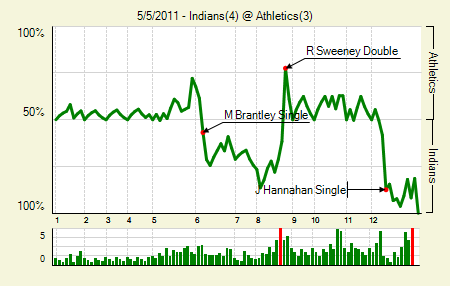Eric Hosmer Gets the Call
The Royals went into the season stating that they were determined to see what Kila Ka’aihue could offer them as a regular first baseman, but it only took 96 plate appearances for them to come to the conclusion that Ka’aihue is no Eric Hosmer. Yesterday, they made the switch official, swapping the two between Triple-A and the majors, and Hosmer will take over at first base for the Royals this evening.
It’s easy to see why the Royals made this switch – Hosmer is killing Triple-A pitching, putting up a .502 wOBA to start the season, while Ka’aihue is struggling again at just a .282 mark. Hosmer is the future in Kansas City, and given how well he was hitting down in Omaha, it’s not hard to conclude that he’s the better player of the two right now as well.
That said, I do find it interesting how differently batting average is treated as a possessor of predictive power at the minor league level. Hosmer’s results are fantastic, but the basis of his batting line in Omaha is a .500 batting average on balls in play. Of his 43 hits, only eight of them have gone for extra bases, the kind of total you’d expect from a leadoff hitter, not a slugging first base prospect. I’m sure Hosmer is hitting the ball hard, but I’d also suggest that he’s also a bit fortunate in how many of his balls are finding holes – you don’t rack up 35 singles in a month without a decent amount of luck, no matter how hard you’re hitting the ball.


